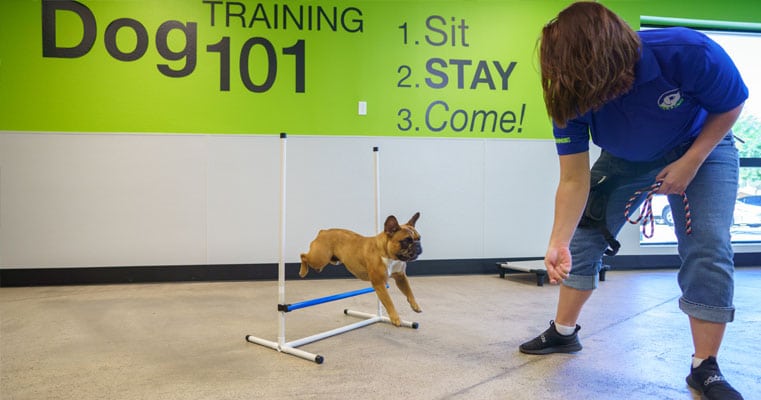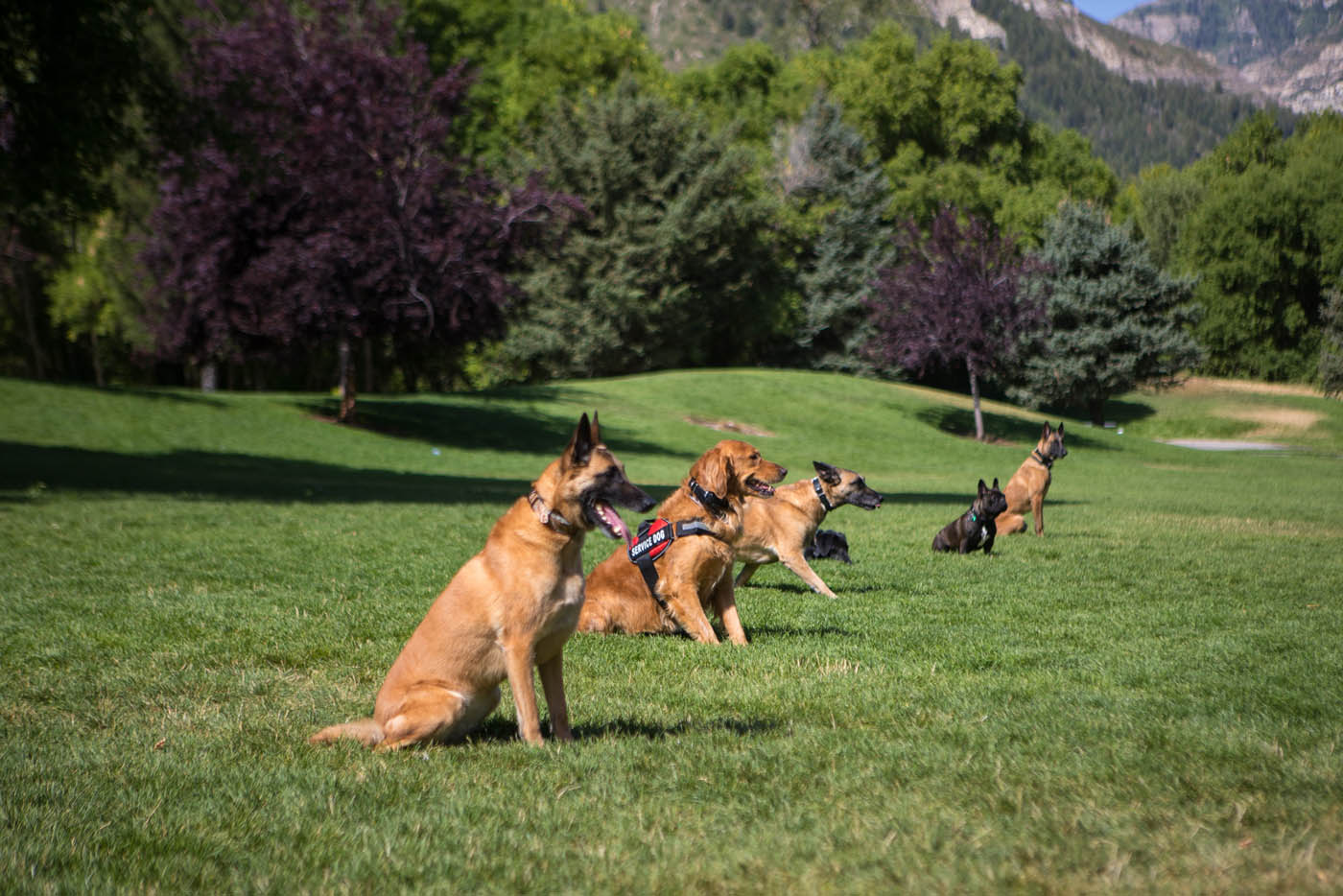Beginner's Guide to Effective Pet Dog Training at Home
Successfully training a canine in your home needs a nuanced understanding of canine habits and reliable interaction methods. Developing clear training goals, using high-grade rewards, and keeping uniformity across member of the family are important aspects. Incorporating training right into day-to-day routines can improve both involvement and retention. Several amateur instructors experience challenges that might impede progress. To browse these complexities properly, it's important to explore several crucial elements that can transform your approach and lead to an unified relationship with your family pet. What fundamental concepts should every newbie grasp to guarantee success?
Recognizing Dog Actions
Understanding dog behavior is important for effective training and cultivating a harmonious partnership between people and their canine friends. Dogs interact mainly through body language, articulations, and faces, making it important for proprietors to analyze these signals accurately. Identifying habits such as tail wagging, growling, or trembling can give insights into a canine's psychological state and intents.

Common behavioral concerns, such as hostility, anxiousness, or excessive barking, frequently come from misconceptions or unmet requirements. Observing and attending to these problems immediately can avoid rise and make certain a favorable training experience. By cultivating a deep understanding of pet habits, owners can customize their training approaches to match their canine companions, eventually bring about a contented and mannerly pet dog.
Essential Training Devices
A well-appointed training room can dramatically enhance the efficiency of pet training in the house. Vital training tools make sure that both the canine and the instructor can involve in effective sessions that foster understanding and bonding.

Spending in a strong leash and a comfy, well-fitting collar or harness is important for security and control. These devices assist establish borders and guarantee the pet dog stays safe during training. Additionally, a marked training area, devoid of diversions, aids focus for both the canine and the instructor.
Educating help such as training pads, cones, or agility equipment can additionally improve the experience by presenting selection and difficulties. Last but not least, having a notebook or electronic app for tracking progression can be vital, allowing you to note successes and areas for improvement. Utilizing these necessary devices will certainly create a favorable training atmosphere and lay the foundation for efficient understanding.
Creating a Training Regimen
Developing a consistent training routine is necessary for efficient canine training in your home. A well-structured regular not just assists in enhancing desired habits however also supplies your pet with a complacency and predictability. To produce an effective training routine, begin by identifying certain training goals, such as read what he said standard commands, chain walking, or housebreaking.
Choose a designated time each day for training sessions, preferably when your canine is sharp and responsive. Sessions must be short, about 5 to 15 minutes, to maintain emphasis and avoid fatigue. Uniformity in timing and setting will certainly boost your pet's knowing experience.
Include training right into everyday activities to strengthen skills. Technique commands throughout strolls or mealtime, which integrates finding out right into natural routines. Additionally, remain versatile and readjust the regular as required, fitting your canine's energy degrees and mood.
Positive Support Strategies
Favorable reinforcement strategies are fundamental to efficient pet training, promoting desired behaviors with benefits instead of punishment. This technique utilizes favorable stimulations, such as deals with, praise, or playtime, to encourage canines to repeat particular activities. The foundation of this approach is timing; benefits should be offered immediately adhering to the preferred actions to produce a clear association.
When applying positive support, it is crucial to pick rewards that investigate this site are encouraging for your pet dog. High-value treats, such as small items of chicken or cheese, can be especially effective during training sessions. In addition, differing the benefits can preserve your dog's passion and excitement.
Begin with simple commands, like "sit" or try these out "remain," and slowly progression to extra intricate jobs. Consistency is vital; make sure that all relative utilize the very same commands and benefit systems to prevent complication.
In addition, it is essential to remain patient and avoid frustration. Dogs, like humans, discover at their very own rate. By cultivating a helpful training setting via positive reinforcement, you can improve your dog's discovering experience while reinforcing the bond in between you and your hairy friend, preparing for successful training end results.
Usual Training Difficulties
While training a pet dog at home can be a satisfying experience, it usually includes a collection of usual challenges that can test both patience and consistency. One widespread issue is disturbance. Dogs might come to be quickly sidetracked by noises, activities, and even fragrances in their environment, making it tough to maintain their focus throughout training sessions.
One more challenge is inconsistency in commands and support. It can hinder and confuse the canine progress if family participants use various signs or rewards. Developing a unified technique is necessary for reliable interaction.
In addition, pets can experience frustration or anxiety, especially if they do not comprehend what is expected of them. This can bring about undesirable behaviors, such as chewing or barking.
Ultimately, the timing of support is vital (Dog training). Delayed rewards can lessen the effectiveness of favorable support, as dogs might fail to connect the behavior with the reward
Getting rid of these obstacles requires commitment, clear communication, and an organized training strategy. Recognizing and addressing these usual obstacles will certainly pave the method for an extra enjoyable and successful training experience in your home.
Conclusion
In final thought, effective canine training in the house demands a thorough understanding of canine habits and efficient interaction methods. By establishing clear training objectives and making use of top quality deals with alongside favorable support, the training process ends up being much more satisfying for both the instructor and the pet dog. Consistency, versatility, and perseverance are important elements that facilitate understanding. Ultimately, incorporating training right into daily regimens improves the bond in between pet dog and proprietor, making the experience both productive and satisfying.
Developing a constant training regimen is vital for reliable dog training at home.Positive reinforcement methods are basic to effective canine training, promoting wanted habits via benefits instead than penalty (Dog training). By promoting a helpful training atmosphere through positive reinforcement, you can boost your pet dog's learning experience while reinforcing the bond between you and your hairy friend, laying the foundation for effective training results
In final thought, successful dog training at home demands a detailed understanding of canine actions and efficient interaction approaches. By developing clear training goals and utilizing top quality deals with along with positive support, the training procedure becomes a lot more satisfying for both the fitness instructor and the canine.